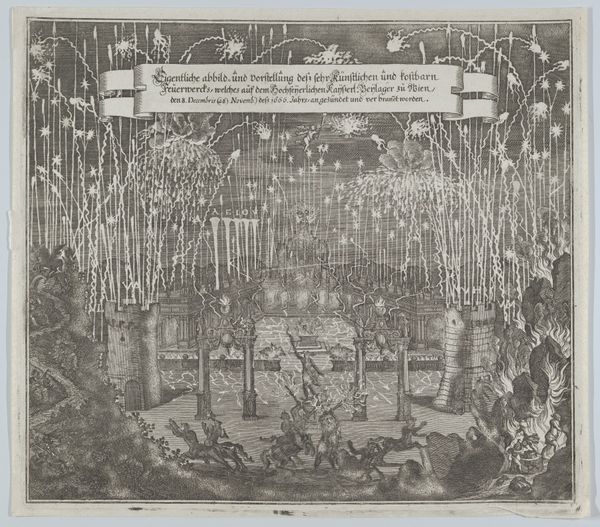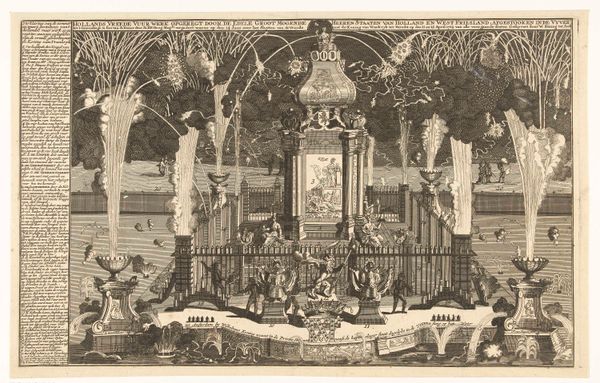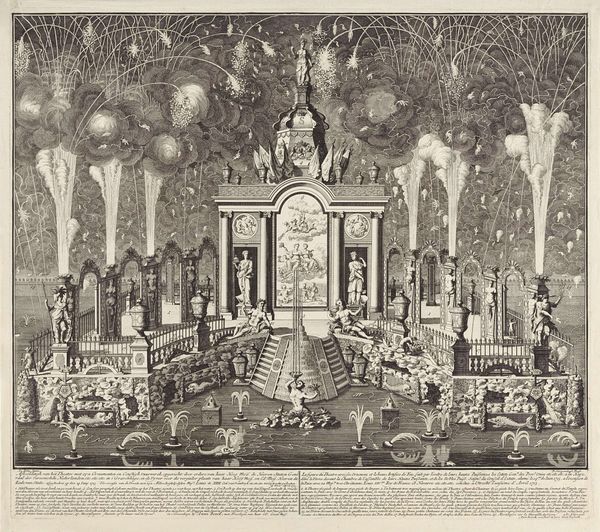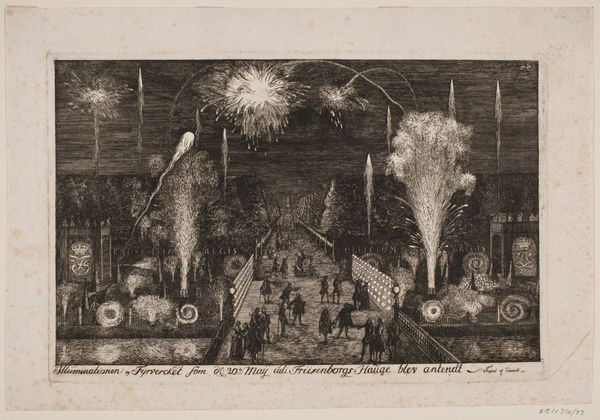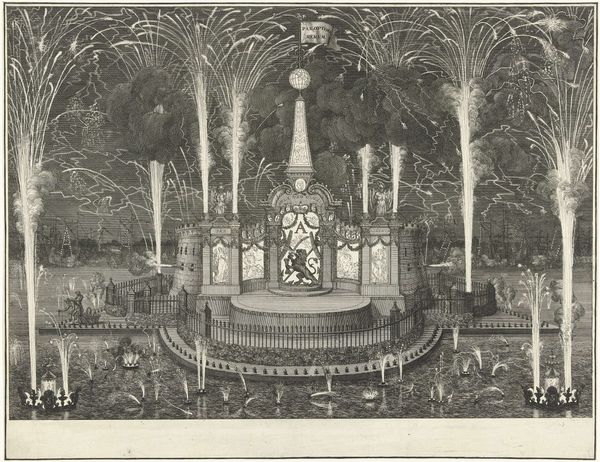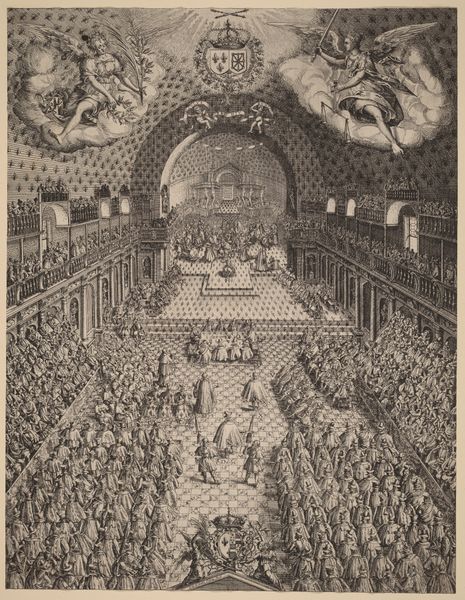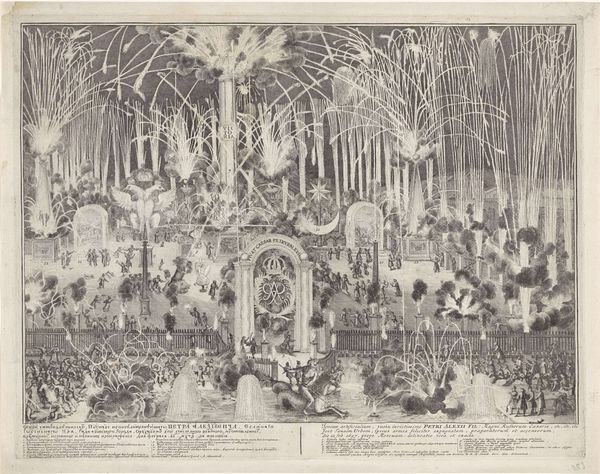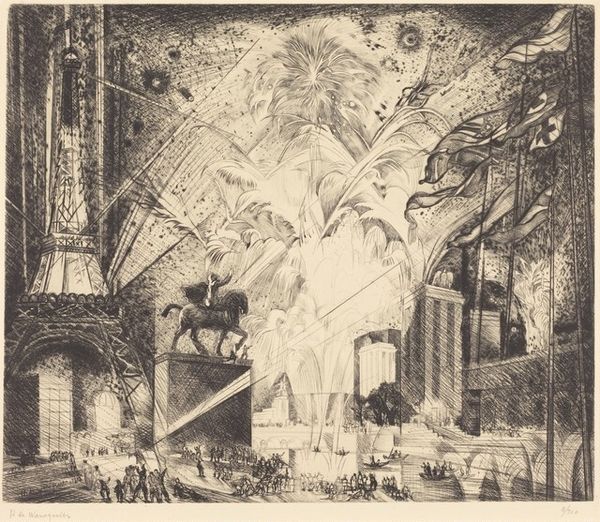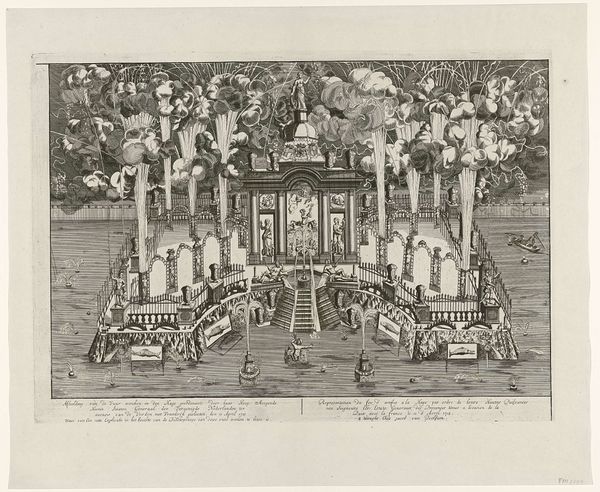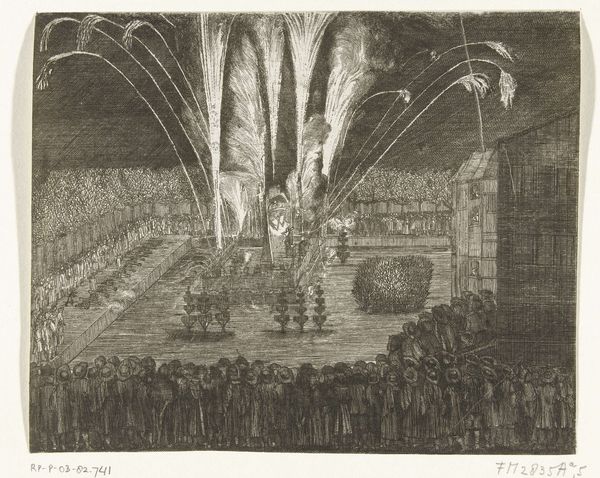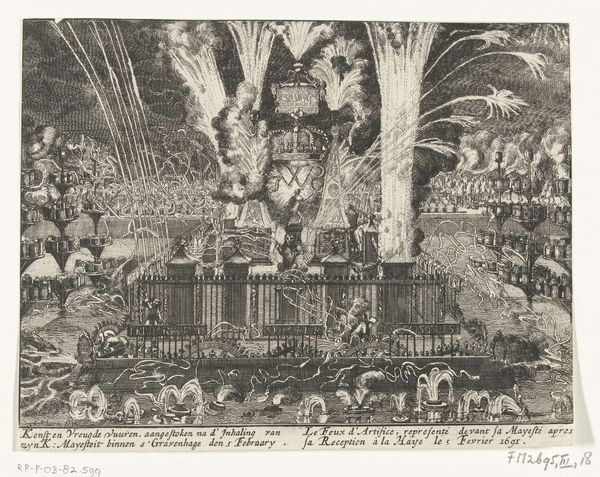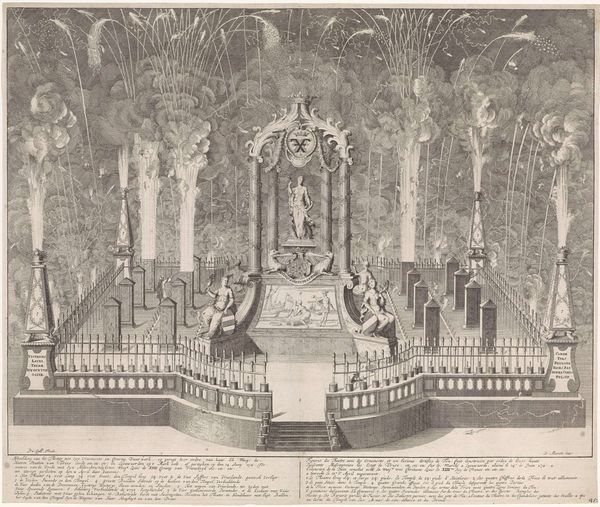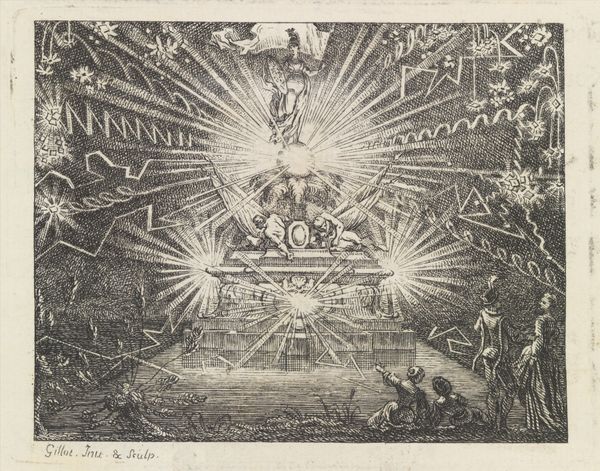
Birth and Christening of Frederick, Duke of Württemberg, Stuttgart, March 17, 1616 1605 - 1650
0:00
0:00
drawing, print, pen, engraving
#
drawing
#
baroque
# print
#
pen work
#
pen
#
cityscape
#
history-painting
#
engraving
Copyright: Public Domain
Editor: Here we have "Birth and Christening of Frederick, Duke of Württemberg, Stuttgart, March 17, 1616" by Matthäus Merian the Elder, made sometime between 1605 and 1650. It's an engraving, so primarily lines etched into a metal plate to make a print, creating a depiction of fireworks in a city. It feels very manufactured to me – so intentionally displayed. What strikes you about this piece? Curator: I'm drawn to the labor embedded within it. Think of the copper or zinc that had to be mined, processed, and then meticulously engraved. It highlights the significant investment in material and craft, both for the fireworks themselves, gunpowder and casings, and for reproducing that ephemeral display. Editor: You're right, there’s almost a tension between this delicate etching and the explosive, fleeting event it’s capturing. Was there something particularly significant about the *process* of fireworks in the Baroque period? Curator: Absolutely. Fireworks displays like this weren’t just entertainment; they were meticulously crafted spectacles of power and propaganda. This print further extends that intention; its wide distribution normalizes displays of wealth and military prowess, which the citizenry also partook in. It suggests an intricate web of manufacture and consumption linking art, power, and social control. Who profits, who makes the explosives, who builds the structures? These questions seem more relevant when we move beyond celebrating art towards analyzing who benefitted from its construction, as in this case. Editor: So the print isn’t just *of* a spectacle; it’s *part* of one, extending its reach and solidifying the Duke's authority. Curator: Exactly. By examining the materials and means of production of both the event *and* the engraving, we start to understand the broader social context that birthed it. Editor: This perspective completely changes how I see the artwork! Focusing on labor reveals hidden narratives behind this representation of a grand historical moment. Curator: Precisely. And by doing so, we also see the artwork itself, no longer as an exceptional image, but as just one more crafted element inside a landscape of material exploitation.
Comments
No comments
Be the first to comment and join the conversation on the ultimate creative platform.
